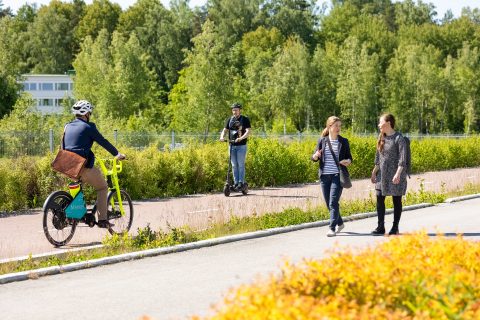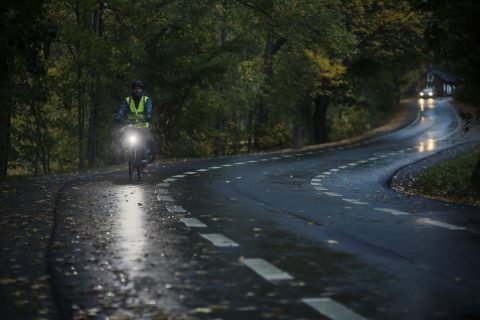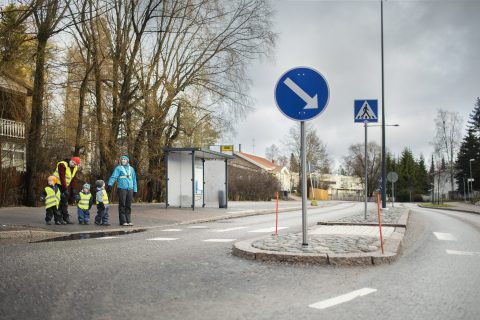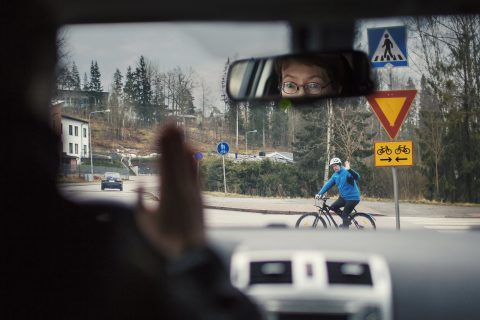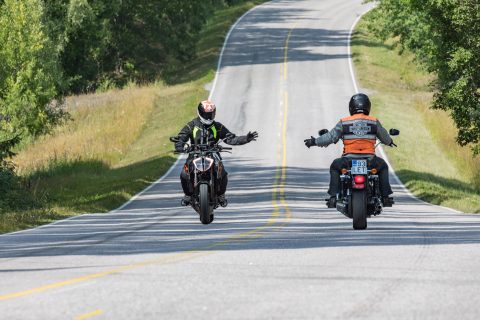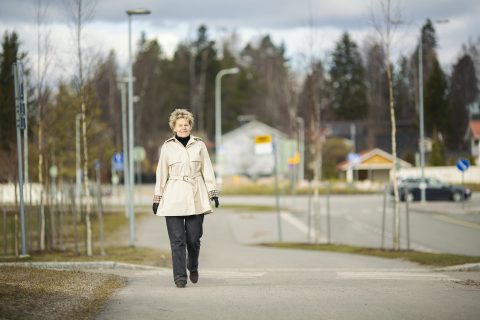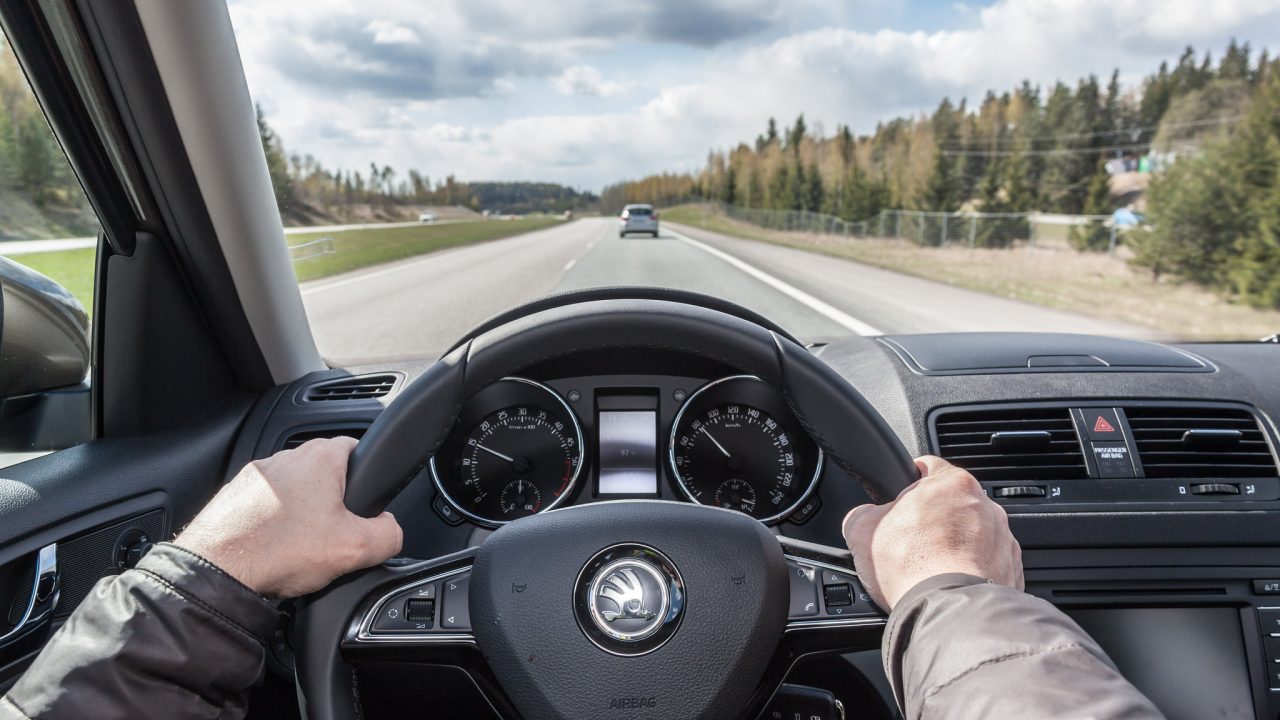
Safe speed
Speed is a critical issue for road safety. Speed limits set the top speed for any particular road, but often safe speed is below this limit – especially in places where people walk and cycle. The condition of bothe the road and vehicle, weather, visibility and traffic conditions all contribute to the choice of safe speed. At safe speed you can stop your vehicle in time even in poor conditions.
Speed limits set the top speed not target speed
The speed a vehicle is travelling dictates whether or not a driver will be able to stop in time to avoid a crash. Speed also dictates the force of the impact if they crash. The faster the speed, the greater is the risk of crashing and harder the hit if crashing.
According to the road accident investigation teams in Finland (Opens in a new window), speeding or excessive speed with respect to the driving conditions, driver’s skills or the vehicle, were present in 49 % of all fatal motor vehicle accidents in 2020.
The maximum permitted speed is a limit not target speed. Often safe speed is below the limit.
At a lower speed
- you have more time to make observations
- the stopping distance and time are reduced
- control of the vehicle improves
- the consequences of a collision are less severe
- the vehicle’s safety technology is more useful.
Studies have shown that it is difficult to estimate the speed and distance of an approaching vehicle. In general, the speed of the approaching vehicle is estimated to be lower and the distance greater than they actually are.
Lower speed limits improve the safety of zebra crossings
Speed limits are an important safety factor both inside and outside of the car – particularly lower speed limits contribute to the safety of pedestrians and cyclists. 30 km/h is an appropriate maximum speed in communal roads where people live, walk and cycle a lot.
If human errors occur, low speed limits in urban areas prevent serious injuries and deaths to vulnerable road users and are an effective way to improve the safety of zebra crossings. People have a 90 % chance of surviving after being hit by a car going at 30 km/h, but less than 50 % at 50 km/h or higher.
Stopping distance grows longer when speed increases
Slowing down gives the driver more time to avoid a crash. The distance it takes a vehicle to come to a full stop is often referred as stopping distance. Stopping distance consists of thinking and braking distance.
The former is the distance travelled when the driver notices a hazard and applies the brakes. Braking distance is the distance travelled whilst braking before the vehicle comes to a full stop. Speed affects directly to the braking distance. As speed doubles, the braking distance is quadrupled. And vice versa: reducing the speed by one quarter shortens the braking distance by almost half.
Higher driving speeds provide less time to process information and to act on it. Usually it takes at least a second for the driver to apply the brake after noticing the hazard. At a speed of 100 km/h the vehicle will travel 28 metres in one second. In good conditions the braking distance is about 43 metres. This means that when travelling 100 km/h the stopping distance is about 70 metres. Braking distances are much longer for larger and heavier vehicles, and in wet or icy conditions.
Higher driving speeds also provide less time to process information and to act on it, and the braking distance is longer
As the speed doubles, the braking distance is quadrupled.
Higher speed means a longer distance to come to a stop if something goes wrong. It also means heavier collisions between road users with more energy to be dissipated and stronger forces to be dealt with. The mass and vulnerability of the vehicles or road users involved also plays a role. In crashes between a lighter and a heavier vehicle the occupants of the lighter vehicle are generally worse off than the occupants of the heavier vehicle. Not to mention pedestrians, cyclists and moped riders in crashes with motor vehicles.
There is a direct relation between collision speed and the severity of a crash. The vehicle collision energy is quadrupled when the collision speed doubles. In other words the higher the collision speed, the more serious the consequences in terms of injury and material damage. This is a law of physics.
In recent decades vehicles have become more equipped to absorb the energy released in a crash with crush areas, airbags and seatbelts. The collision speed still matters for the crash outcome: the higher the collision speeds, the less likely the vehicle and its safety devices can protect the occupants.
, the human body is physically very vulnerable in comparison with the enormous forces released in a collision.
Studies have shown that it is difficult to estimate the speed and distance of an approaching vehicle. In general, the speed of the approaching vehicle is estimated to be lower and the distance greater than they actually are.
Winter speed limits
In Finland, winter speed limits are put in place in October an November due to the increased darkness and winter driving conditions. Usually this means that in areas where the summer speed limit is 100 km/h, in winter it is 80 km/h. The aim of reducing speeds is to reduce the risk of accidents due to seasonal fluctuations. Read more about difficult driving conditions. (Opens in a new window)
